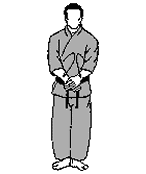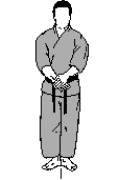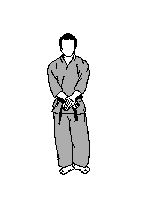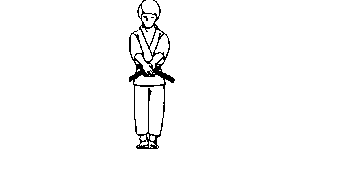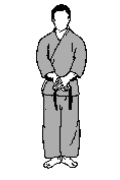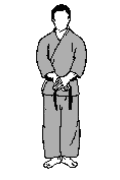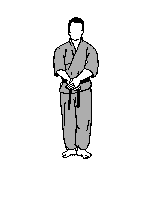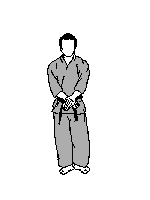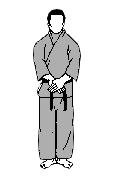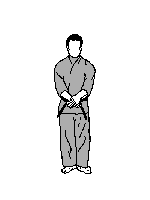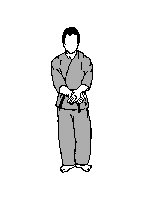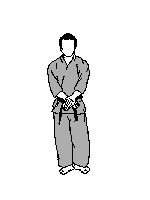| 11th) NAIHANCHI |
|
Kata of SHORIN RYU (SHURI TE) that
Master Akamine chose because of its lateral displacements, and its
balance's training. It is also knows as NAIFANCHI. |
|
| 12th) SEI KAN SHU
(or JU KAN SHU)
(or KAN SHU) |
|
Very old Kata, that takes this name because it shows a
group of ten blockades that, although individually each one has its own name, all are
assembled under the denomination "KANSHU (or KAISHU) BLOCKADES". It is also knows as KAN
SHA. |
|
| 13th) SAI FA (or SAI HA) |
|
Kata also common to GOJU RYU style (Okinawan FORM and LINE). It is also knows
as SAI FUWA. |
|
| 14th) SEIONCHIN |
|
(Kata of the Feline), based on the form of SHITO
RYU (SEINCHIN). |
|
| 15th) RYU FA |
|
(Kata of the Snake). It is Black Belt level kata (1st.
DAN). |
|
| 16th) SEI PAI |
|
Kata that GOJU
RYU style originally called JU HACHI TE or SEI HACHI TE (18 hands), and that KENSHIN
RYU style
call NISEI ICHI TE, because of it shows 21
different hand's techniques. |
|
| 17th) SEISAN TE
(or JU SAN TE)
(or SEI SAN TE) |
|
(13 hands). Very old Kata, of Chinese origin, developed
by some Masters of SHOREI KAN; UECHI RYU and BUGEIKAN. Based on the form of the BUBISHI
("PANGAINOON SEISAN"), nothing has
to do with the versions SEISAN of GOJU RYU, neither SEISHAN of WADO
RYU. |
|
| 18th) SHISOOCHIN |
|
(4 directions - or ways - kata). SISOCHIN for GOJU RYU. |
|
| 19th) SANSEI ICHI RYU |
|
(31 movements). SANSEI RYU (Dragon's
kata) for GOJU RYU. |
|
| 20th) KURURUN FA
(or KURUTON FA)
(or KURU UN HA) |
|
A
sequence of techniques to escape to the "DOUBLE
NELSON" capture, that - in the
corresponding
position - are called KU RU RUN FA - constitute
the CENTRAL PART of this kata developed by the style GOJU
RYU. |
|
| 21th) SHUPARINPEI
(or SUPARUNPEI) |
|
Very advanced Kata of GOJU RYU style, also called HYAKU HACHI TE (one hundred and eight hands), and PEICHURRIN. |
|
| 22th) KEN SHIN RYU |
|
Also known as KOSOKUN, is the Japanese
Version of KEN WASHI IN RYU kata. |
|
| 23th) KEN WASHI IN RYU |
|
(Last of the Style). From Chinese origin (KEN SHAO LU), it symbolizes
the EAGLE. It was developed in Japan by the
Masters Seiko Higa and Seitoku Higa. |
|
